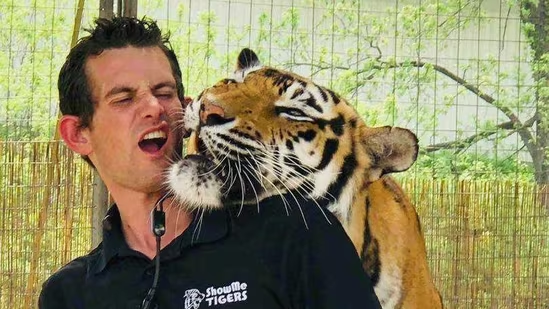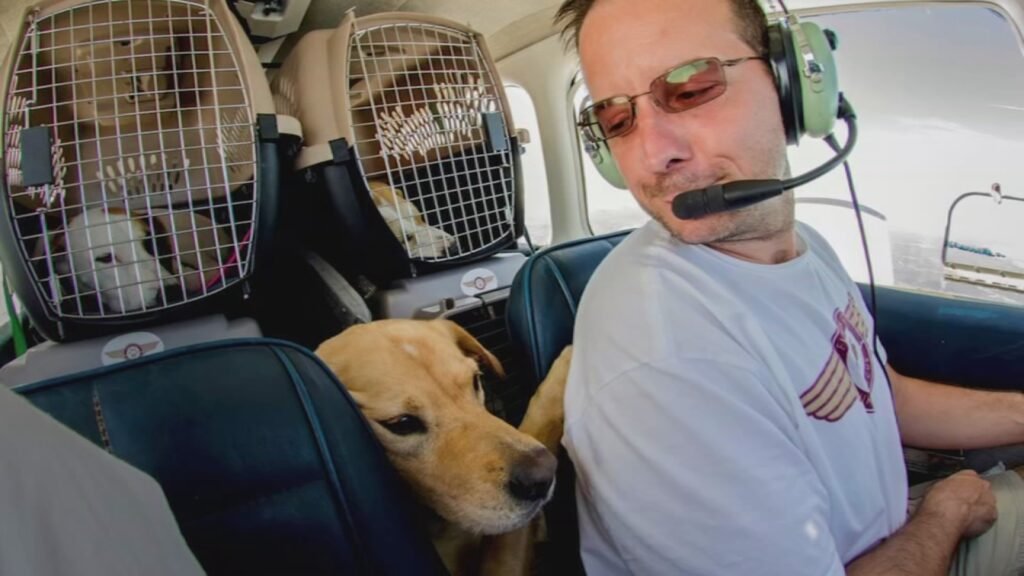When Wild Animals Are Exploited for Entertainment, Tragedy Isn’t an Accident—It’s Inevitable
A horrifying and deeply symbolic tragedy unfolded recently when Ryan Easley, a known tiger handler and exhibitor, was fatally attacked by a tiger in front of his own family and bystanders. This incident has reignited public outcry around the abuse of captive wildlife—and serves as a brutal reminder of the price we all pay for turning wild animals into entertainment props.
The attack, which took place during a live exhibition, has been called “shocking” by some and “inevitable” by others. But make no mistake: this was not an accident.
It was the final, violent expression of a system built on domination, deprivation, and denial of basic animal rights.
🐅 Learn more about wildlife exploitation and how we can end it at our Abuse of Animals & Wildlife section.
Who Was Ryan Easley? A Record of Abuse and Exploitation
Ryan Easley was no stranger to controversy. For years, he had been a fixture on the exotic animal exhibition circuit, performing with tigers in traveling shows and circuses despite mounting pressure from animal welfare organizations to halt such practices.
Animal rights advocates repeatedly documented and reported his treatment of tigers, citing:
- Cruel training methods involving fear and punishment,
- Long-term confinement in cramped cages,
- Inadequate veterinary care, and
- Stress-inducing travel schedules that are unnatural for any wild animal.
Easley had been under scrutiny from animal protection groups, yet he continued to profit from forcing majestic predators to perform under glaring lights and in loud arenas—far from the forests and grasslands where they belong.
What Happened: The Final Performance Ends in Fatality
During a live demonstration, one of the tigers Easley had trained turned on him. The tiger attacked in front of his own family and a crowd of horrified spectators, delivering what turned out to be a fatal mauling.
For years, these powerful animals had been forced to suppress their instincts, subjected to unnatural behaviors, and reduced to commodities. In that moment, the tiger simply responded as nature intended—as a wild animal pushed too far.
This wasn’t vengeance. It wasn’t calculated. It was the tragic outcome of years of physical and psychological abuse, and it happened not because the tiger was “bad,” but because the system itself is broken.
The Bigger Issue: Captivity, Cruelty, and the Myth of Control
This incident is not isolated. Across the United States and around the world, thousands of wild animals are kept in captivity under the guise of “education” or “entertainment.” But behind the curtain, these animals endure:
- Chronic stress and depression due to confinement,
- Physical abuse as part of coercive training routines,
- Malnutrition and lack of exercise, and
- A complete denial of natural behaviors.
And too often, they lash out.
When tragedies like this happen, the media asks, “Why did the animal attack?”
The real question should be: Why was the animal there in the first place?
Wild animals are not entertainers. They are not props. They are not “ambassadors” for education. They are living, breathing beings who deserve freedom—not a lifetime behind bars.
📚 Dive deeper into the systemic abuse of wild animals in captivity in our Abuse of Animals & Wildlife hub.
Public Safety and Animal Welfare Go Hand in Hand
Exploiting wild animals is not only unethical—it’s dangerous. Time and time again, captive wildlife attacks result in injury or death, often of handlers, sometimes of bystanders, and almost always of the animals involved.
In this case, a man lost his life. A tiger may now be euthanized for acting on instinct. Families were traumatized. And all of it could have been prevented.
No one wins in these spectacles.
Yet laws across much of the U.S. still allow private ownership of big cats, unregulated roadside zoos, and traveling shows that exploit exotic animals.
How We Can Stop the Cycle of Suffering
This tragedy, as devastating as it is, can serve as a catalyst for change—but only if we act. Here’s what you can do today:
🐾 Demand Stronger Legislation
Support federal laws like the Big Cat Public Safety Act, which bans private ownership and public interaction with big cats. Push for state-level reforms that prohibit the use of wild animals in entertainment.
🐾 Boycott Animal-Exploiting Shows
Never attend circuses, fairs, or performances that feature wild animals. Money fuels demand—when we stop paying, they stop exploiting.
🐾 Support True Sanctuaries
Donate to and advocate for accredited wildlife sanctuaries that rescue and rehabilitate animals without forced interaction or commercial profit.
🐾 Educate Others
Share information about the realities of animal captivity. Help break the illusion that these animals are happy, well-treated, or “ambassadors” for their species.
Final Thoughts: A Preventable Tragedy—and a Call to End the Abuse
The death of Ryan Easley is tragic—for his family, for the public, and yes, for the tiger involved. But it was also predictable. When we force wild animals into unnatural environments and treat them as objects of profit, this is the risk we take—not just for the handlers, but for society at large.
This incident should not be sensationalized. It should not be dismissed as an anomaly. It should be a wake-up call.
Let this be the last time we wait for someone to die—or an animal to be destroyed—before we say, “Enough.”
🦁 Wild animals belong in the wild. Not in cages. Not in circuses. Not on leashes.
🚨 Take action today and learn how you can help end the abuse of wild animals in entertainment by visiting our Abuse of Animals & Wildlife Action Center.


